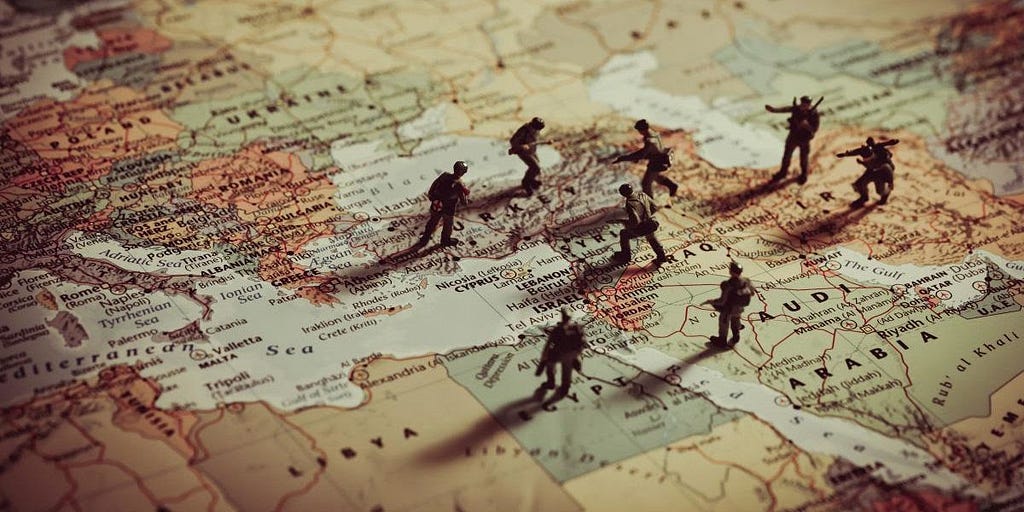
By Tenley Baxter
In lively academic environments, students often come across topics that seem too challenging to take on by themselves but struggle to find a resource to help them understand. Regardless of whether there is or isn’t a provided class covering the subject, professors of Southern Virginia University are eager to share their knowledge if students only ask.
Professor Sorber (Humanities and History) agreed to face one of these topics in an interview with me. He has taught history and core classes at SVU since 2019, and currently reaches classes on Classical Islam and Medieval Christianities. He chose this unique area of interest because he has “always wanted to know where things come from and why they are a certain way.” The topic of focus was a brief background of the controversial conflict in the Middle East, specifically in Israel and Palestine.

Sorber began his explanation by noting two important things. First, he explained that there have been conflicts in the Eastern Mediterranean, around the area that is now called Israel and Palestine as long as we have had written records for the region. While any piece of land anywhere in the world has had multiple different peoples on it who have arrived at that land in their own ways, we must remember that this conflict is a modern one. Second, he stated that “no matter how you look at this, the conflict is not just Israel versus Palestine.”
The story largely begins after World War I with the collapse of the Ottoman Empire. In the late 19th Century, Theodore Herzel popularized the political notion of “Zionism” in Judaism, emphasizing the importance of returning to Israel, a religious claim based on interpretations of the Hebrew bible. In the Koran, Arabs are traced to Ishmael and — based on that book of scripture — have a covenant relationship with Israel as well.
Multiple groups share the claim to the land, though none really have scientifically provable superiority. After the war, a diversity of peoples began to immigrate into the region of the Ottoman Empire now called Israel and Palestine.
1917 The British and French began to divide Ottoman Empire territories from WWI without seriously impacting politics upfront. Balfour declaration: British support a Jewish homeland if it occurs though there was no official plan to implement one at this point.
After WW2 The international community was reeling and the refugee crisis intensified. Many fled to the British territory now recognized as Israel. The Arabs had lived there a long time before the Jews immigrated and the influx of people created conflict. There have been smaller communities of Jews living in this area before, meaning that there has been relatively peaceful coexistence in this region among a diversity of religions with similar ethnicities since the seventh-century Arab-Islamic conquests. However, during these various transitions after WW2, the Palestinians have not had a political voice.
1947 Britain turns the conflict over to the United Nations, who come up with the two-state solution. Territories are divided to create the borders that exist now. In response, Israel (Jews) accepted and declared independence while the Palestinians generally rejected it — from their perspective, the land has been taken from them.
1948 As this year begins, Israel finds themselves in a fight for their lives and establishment while neighboring countries invade. Palestinians call the ensuing war the “al-Nakba” (The Catastrophe), in which an estimated 700,000 Palestinians (500 communities) are moved out of their homeland. Israel wins this war, Jordan takes the West Bank, and Egypt takes Gaza and West Jerusalem.
1967 The Six-Day War broke out. As a result, Palestine was fully occupied — Israeli settlement ensued, meaning they began to build settlements in the Palestinian Territories (migration). These are generally seen as illegal but not necessarily punishable or resolvable. The situation began to reflect modern relations today.
1970 Camp David Accords: Egypt and Israel signed a peace deal. This was the first time one of the Arab nations internationally recognized Israel as having a right to exist.
1987 A car accident occurs and Israeli driver kills four Palestinians. This marked the first “Intifada” (uprising) as the Palestinians felt injustice. As a restful 200 Israelis and 1,300 Palestinians are dead, Hamas is born, though not declared a terrorist organization by the U.S. yet, they were determined to liberate Palestine. As time went on, any claims by neighboring Arab countries were rescinded and they avoided getting involved.
1993 Oslo Accords: Secret negotiations are made between Israel and Palestine that created the Palestinian authority — a group meant to oversee Palestine’s relations with the Israeli government. Israel agreed to withdraw many settlements but not the militia. The intention was to create a stepping stone to compromise peace.
2000 Second Intifada: 1,000 Israelis and 4,000 Palestinians dead. Thereafter, further contention occurred with the death toll often higher on the Palestinian side.
2005 Hamas was popular in Gaza and got elected into power, possibly because many Palestinians in Gaza didn’t feel politically valued and may have sought political representation. Israel has had dominant control of Gaza since the 90s.
While this is a conflict ostensibly between Israel and Palestine, it is also becoming more international because of the various interests that different countries have. One of the reasons it is a fragile subject is because it could expand into much broader conflict, drawing in allies on both sides. It is a relevant concern to American politics because of the longstanding political relationship between the US and Israel, and as such is valuable to be aware of. Professor Sorber concluded, saying, “If we’re ignorant of what’s going on in the world, we will be misled.”
Professor Explains: Middle Eastern Controversy was originally published in The Herald on Medium, where people are continuing the conversation by highlighting and responding to this story.






